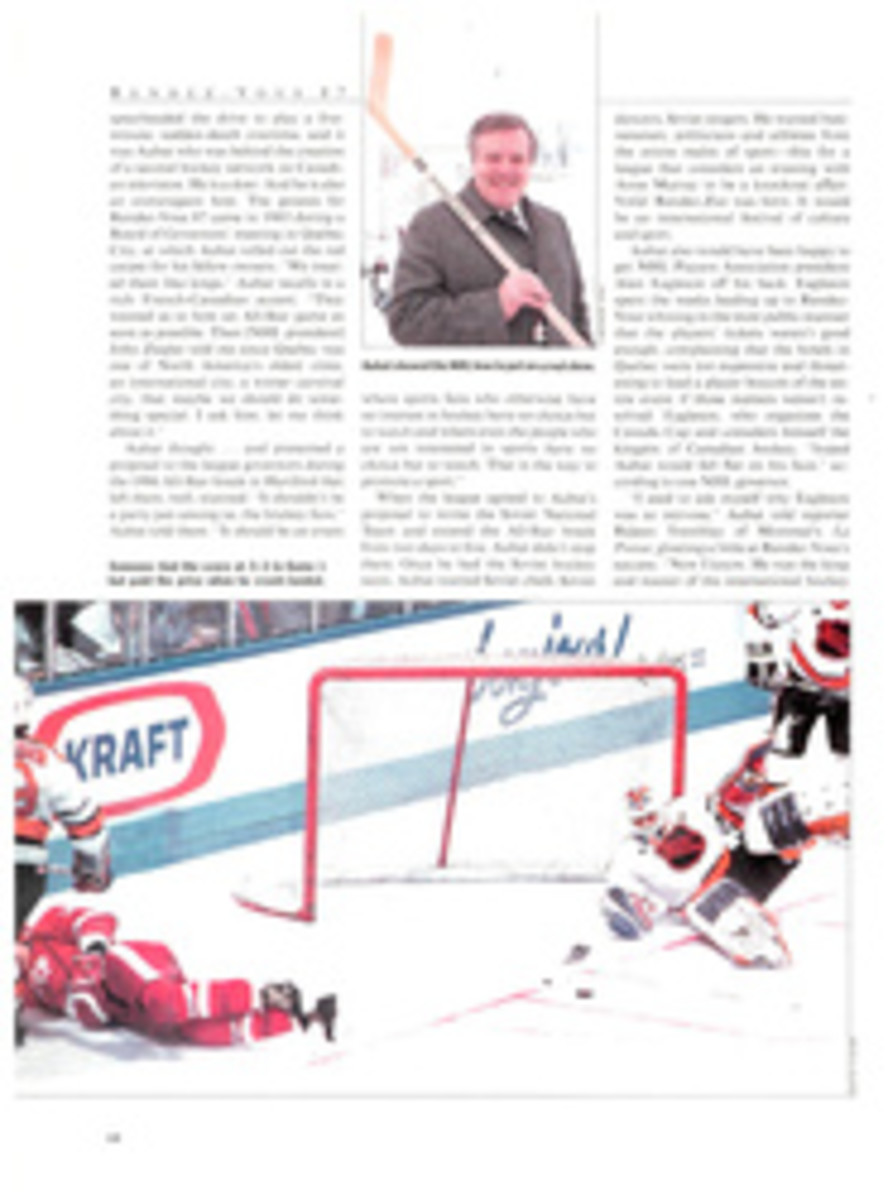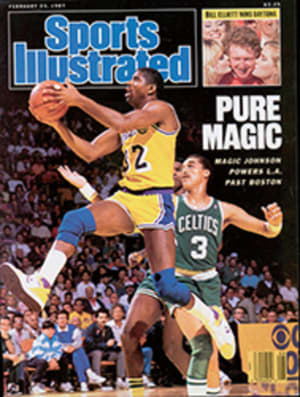
GOOD TO THE LAST DROP
Supposedly it was seven-time Daytona 500 winner Richard Petty who discovered, or at least first exploited, the art of drafting. That was more than 20 years ago, and drafting has been the key to success ever since. But in Sunday's Daytona 500 Bill Elliott undiscovered the technique in which the driver of one car rides in the vacuum created by the car in front of it, causing a pull/push effect that increases the speed of both. Avoiding the draft as if it were an oil slick, Elliott rammed his Thunderbird home a suspenseful winner, chased to the checkers by the venerable duo of Benny Parsons and Petty himself.
The victory capped a sensational month for the lanky redhead who's known as Awesome Bill from Dawsonville (Ga.). During Speed Weeks, he set a 500 qualifying record at 210.364 mph, won three of his six undercard races, finished second by inches, finished fourth, and survived a dizzying crash in another. Oh, yes—they also call him Dollar Bill, and in February alone he drove home with $294,200.
The 500 was crash-free for only the third time since 1959, but during the preliminary races cars slid, spun, sailed, tumbled and smashed their way around the 2.5-mile banked tri-oval. One driver was killed instantly in a six-car smashup during Friday's 200-mile event for race-prepared subcompacts. The victim was Joe Young, 38, a Richmond, Va., mechanic and father of two, who had been racing for 10 years.
So the forecast for the 500 had been...take caution. By reducing the minimum weight of its Winston Cup cars to 3,500 pounds, NASCAR had sent the chassis men—drivers and mechanics alike—fumbling under the fenders for new suspension secrets. All through the race, most of them were still seeking that nirvana called neutral handling, when all four tires slide the same in the turns. Elliott's victory—he said it tickled him pink—didn't really prove that the T-Bird is the most aerodynamic stock car, nor that brother Ernie builds the best engines, nor even that Bill is the most awesome driver. It proved mostly that he's simply the best man when it comes to setting up and adjusting a chassis, which is what racing on the high-banked Superspeedways is often about.
For reasons no one could explain—or when they did try, one expert's theory usually contradicted another's—the new cars didn't draft as they had in the past. They were delightfully stable when they were alone on the track, but when they got up tight to each other, especially nose to tail, they handled as if their trunks were full of squirrels. And the draft had shortened with the cars' new shapes: steeply sloped rear windows on the GM cars and T-Bird's overall teardrop profile—"a study in aerodynamics," said Darrell Waltrip, a Chevy driver, admiringly.
Bill Elliott, an avowedly simple man, came up with the simplest solution to all this slide-rule esoterica: Stay away from the turbulence created by the competition. And the most effective way to do that? Get out front and stay there.
During Saturday afternoon's final practice session, when teams hone their car's handling if they're lucky and desperately chase it if they're not, a rival crew chief gestured over at the Elliott team. "They haven't turned a bolt on that car all week," said Kirk Shelmerdine, who had wrenched his driver, Dale Earnhardt, to the '86 NASCAR championship. "They just wheel it in after a practice session, wax it and sashay back on the track—and they've been killin' everybody." But now there was glee in his voice, because Elliott's T-Bird was up on jackstands, and its crew was cranking a lot of wrenches, seeking a lost suspension setup. "Look at them wailin' on that car," chortled Shelmerdine. "Ain't it a pretty thing to see?"
It must have been an even prettier sight for Shelmerdine on Sunday when Earnhardt, a character who comfortably fits his billing as One Tough Customer, drove his bright blue-and-yellow Monte Carlo to the front of the pack after 158 of the 200 laps. Elliott's own race was going according to plan, as he'd spent more than 75 laps in the lead. But now it seemed as if Earnhardt and Buddy Baker, a perennial who blooms with a passion in February, had found the handling to challenge Elliott. Big Buddy, who had set the race's record average speed of 177.602 mph while winning in 1980, lifted his Oldsmobile with his right foot and threw it into the lead past Earnhardt on Lap 166.
But then Elliott, following in third, seemed to show his true hand. He zoomed past them both and ran off so fast he must have been laughing. Elliott says it was simpler than strategy, though. "They got to racin', beatin' and bangin' on each other, and I was able to get away," he explained.
He only got away long enough to drive into drama. With 18 laps remaining Elliott was leading a pack of five hungry superstars: Earnhardt, Baker, '86 winner Geoff Bodine, Petty and Parsons. They would all need a shot of gas before the finish, so it was now the pit crews' race. Elliott dived in first and tore out after his crew aced it: six seconds. One by one they flew in and out until only Bodine was left, alone in the lead—way, way out in front. And he had decided he wasn't coming in for gas.
This is the definition of a racer: There is no such thing as second place. "You either win or you lose," said Bodine afterward. "It looked like we were going to lose anyhow. We couldn't outrun Elliott, so we had to try to outlast him."
Three laps from the end, leading by more than a mile, Bodine's Chevy coughed and coasted. He had won the 500 last year when, also with three laps left, Earnhardt ran dry; this time he finished 14th.
Both Parsons and Petty had stayed within striking distance of Elliott, but Baker and Earnhardt lost their chances in the pits and would finish fourth and fifth. Amiable Benny and ever-popular Richard, ages 45 and 49, respectively, had been the most spectacular drivers in the race, running together in the high, high groove—the long way around, where you have to go faster just to keep up. Now only they could stop the rampage of Wild Bill.
But neither Parsons' Chevy Monte Carlo SS nor Petty's Grand Prix Pontiac was handling as well as Elliott's car. Parsons gave it a great shot but finished .6 of a second back, with Petty a few car lengths behind him. Elliott's 176.263 mph would not beat Baker's record.
"We just worked with the car all day long," said Elliott, as if the other teams hadn't. "We just kept adjusting and finally got it to where I could run the way we wanted."
Parsons probably summed it up best. "There were times during the day when I thought Elliott was not invincible," he said. "Turned out in the end he was."
PHOTO
GEORGE TIEDEMANN
Elliott (9) pitted once more after this stop, but Bodine (5) didn't and he paid the price.
PHOTO
GEORGE TIEDEMANN
Earlier in the week Derek Bell's Camaro lit up Daytona, and Phil Barkdoll (73) was violently bounced out of a qualifying race for the 500.
PHOTO
PATTY SANDS
[See caption above.]

